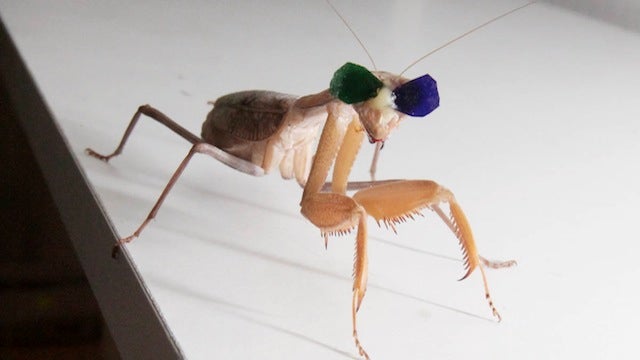Scientists are giving tiny 3D glasses to Praying Mantises

Scientists who gave 3D glasses to Praying Mantises have proved the creatures are the first invertebreates to have the stereopsis ability.
Numerous vertebrates, such as monkeys, owls, and cats have been shown to have the ability to compare input from both eyes to enable depth perception.
But scientists at Newcastle University have discovered, with their novel experiment, that Mantises also have this ability.
A paper, published in Scientific Reports, details how the research team used harmless beeswax to fix lenses, which eventually fall off naturally, to the insects’ eyes.
Related: What is Ultra HD Premium?
(YouTube)1NgJT18_Paw(/YouTube)
They then played images of moving targets and found that the Mantises only tried to catch the virtual prey when the footage was shown in 3D.
Initially, the team used polarised 3D glasses, of the sort you would wear at the cinema, but found that because the insects were too close to the screen, the effect didn’t work.
Blue and green spectral lenses were then used, much like the old red and blue glasses, and the insects were shown the computer generated prey.
Related: CES 2016
The results ‘definitively demonstrate stereopsis in mantises’ according to the paper, entitled ‘Insect stereopsis demonstrated using a 3D insect cinema’.
Researchers also write that “this method opens up broad avenues of research into the parallel evolution of stereoscopic computations and possible new algorithms for depth perception”.
The study, which demonstrates how incredibly simple systems such as the brain of an insect can process sophisticated 3D information, could lead to new algorithms for 3D depth perception in computers.

